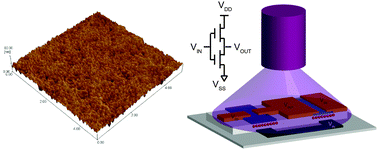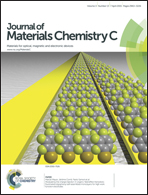CdSe/ZnS core–shell quantum dots charge trapping layer for flexible photonic memory†
Abstract
Light-responsive memory, in which the writing, reading and erasing processes are sensitive to light signals, has its own niche for civilian and military applications. However, the control of memory properties with ultraviolet (UV) light is difficult since the common charge trapping layer of flash memory is insensitive to UV light signals. Here, we reported a novel design of UV-manipulated photonic nonvolatile memory based on a spin-coated close-packed CdSe/ZnS quantum dots (QDs) monolayer. Our devices display remarkable UV-induced detrapping behavior and UV-controlled persistent threshold voltage (Vth) shifts of programmed or erased states. The electrically programmed flash memory was even erased by low intensity UV light without an additional external electric field within 1 s, which is superior to the traditional silicon-based erasable programmable read only memory (EPROM). With an advance in the unique UV-detrapping effect of this novel structure, UV-tunable complementary inverters constructed from p-channel and n-channel flash memory have further been demonstrated. The UV tunable charge trapping/detrapping facilitates the creation of a new class of multifunctional optoelectronic memory devices.



 Please wait while we load your content...
Please wait while we load your content...